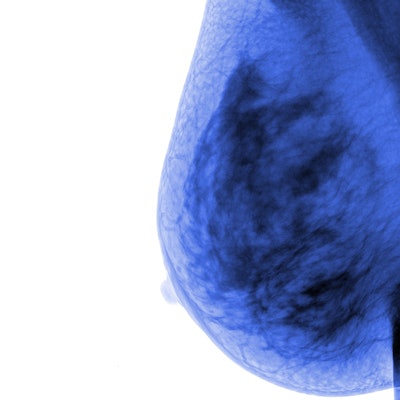
Quality assurance (QA) in mammography varies widely between countries and reporting settings and implementation remains patchy, particularly compared with screening, a survey carried out by the European Society of Breast Imaging has highlighted.
Despite the growing consensus that QA of image interpretation plays a central role in screening and mammography for maintaining minimum standards and supporting continuous improvement, the measures recommended by European bodies or national organizations often get overlooked, the authors noted in a European Radiology article published on 22 July.
"The QA structure across Europe shows considerable variation," they wrote. On the positive side, many radiologists consider that performance tests would help to improve their mammography interpretation skills, they added.
Urgent need for data
Concerns about the varied approach to QA prompted the board of the European Society of Breast Imaging (EUSOBI) to carry out a first survey about radiologists' preferences on measures of image interpretation in mammography. In April 2022, an anonymous online survey was distributed to all members and national breast radiology groups in Europe. The 25 questions were designed to collect demographic characteristics, information on responders' mammography workload and data about QA measures currently used in their country.
A total of 251 breast radiologists from 34 countries completed the survey. Most respondents provide both screening and symptomatic services (137/251, 55%), working in an academic hospital (85/251, 34%) and reading 1,000 to 4,999 cases per year (109/251, 43%), according to the authors.
 Number of cases a mammography reader considers they should read annually to comply with their country's guidelines. Table courtesy of Eleni Michalopoulou et al and European Radiology.
Number of cases a mammography reader considers they should read annually to comply with their country's guidelines. Table courtesy of Eleni Michalopoulou et al and European Radiology.Overall, more than half of respondents (133/251, 53%) had established QA measures in their workplace. Although less than one-third (71/251, 28%) had to participate in regular performance testing, the vast majority (190/251, 76%) agreed that a mandatory test would enable them to improve their skills.
"We expected the guidelines for readers not involved in screening (symptomatic or assessment setting) to be less well defined, and we already hypothesised a high variability between countries," first author Eleni Michalopoulou, team leader in the Faculty of Medicine & Health Sciences at Nottingham City Hospital, U.K., told AuntMinnieEurope.com, adding that the aim of the survey was to confirm the hypothesis and underline the variability in breast imaging practices outside the screening setting.
The authors also sought to emphasize that QA of image interpretation is vital at all levels, not only in the screening setting.
A total of 60 respondents came from Italy. "Italy, together with the Netherlands, are highly represented between EUSOBI members," Michalopoulou explained, adding that the Italian society showed the most interest in the initiative. "A potential justification for this could be readers' increased interest in QA (such as the PERFORMS scheme) because of the high malpractice lawsuits that have taken place in their country."
Looking to the future
At the upcoming EUSOBI annual congress in in Valencia, Spain, the survey results will be presented on 28 September by co-author Prof. Yan Chen, also from Nottingham, as part of the "Quality assurance and PERFORMS" talk (session 2 on screening).
"The survey has already raised interest," Michalopoulou said. The plan is for a follow-up survey in five years' time "to investigate if the homogeneity between countries has been amplified."
You can view the full article on the European Radiology website.



















